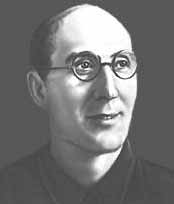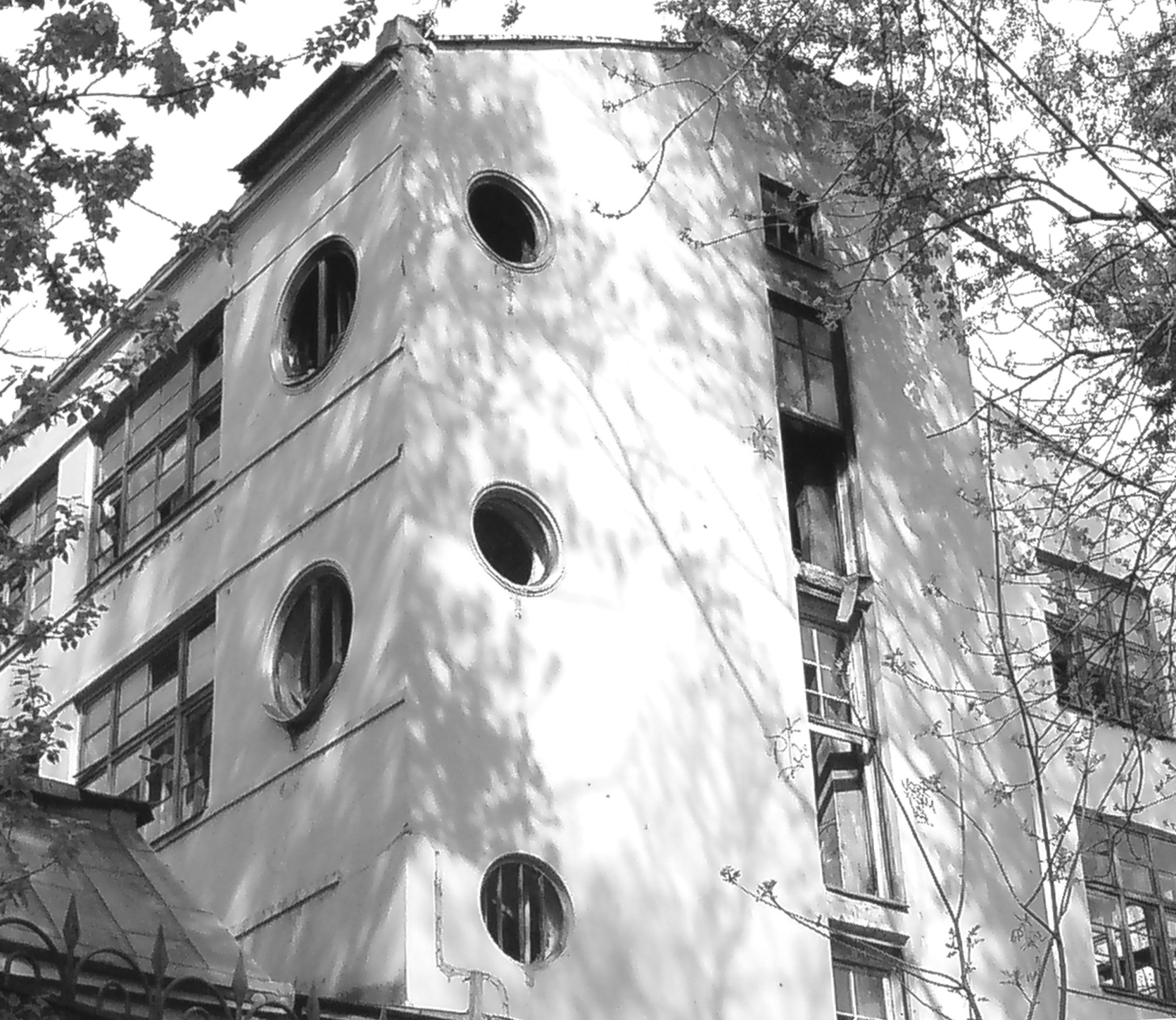|
Moisei Ginzburg
Moisei Yakovlevich Ginzburg (, ; – 7 January 1946) was a Soviet constructivist architect, best known for his 1929 Narkomfin Building in Moscow. Biography Education Ginzburg (Ginsberg) was born in Minsk into a Jewish architect's family. He graduated from Milano Academy (1914) and Riga Polytechnical Institute (1917). During Russian Civil War he lived in the Crimea, relocating to Moscow in 1921. There, he joined the faculty of VKhUTEMAS and the Institute of Civil Engineers (which eventually merged with Moscow State Technical University). Ideologist of Constructivism The founder of the OSA Group (Organisation of Contemporary Architects), which had links with Vladimir Mayakovsky and Osip Brik's LEF Group, he published the book ''Style and Epoch'' in 1924, an influential work of architectural theory with similarities to Le Corbusier's Vers une architecture. It was effectively the manifesto of Constructivist Architecture, a style which combined an interest in advanced t ... [...More Info...] [...Related Items...] OR: [Wikipedia] [Google] [Baidu] |
Minsk
Minsk (, ; , ) is the capital and largest city of Belarus, located on the Svislach (Berezina), Svislach and the now subterranean Nyamiha, Niamiha rivers. As the capital, Minsk has a special administrative status in Belarus and is the administrative centre of Minsk region and Minsk district. it has a population of about two million, making Minsk the Largest cities in Europe, 11th-most populous city in Europe. Minsk is one of the administrative capitals of the Commonwealth of Independent States (CIS) and the Eurasian Economic Union (EAEU). First mentioned in 1067, Minsk became the capital of the Principality of Minsk, an appanage of the Principality of Polotsk, before being annexed by the Grand Duchy of Lithuania in 1242. It received town privileges in 1499. From 1569, it was the capital of Minsk Voivodeship, an administrative division of the Polish–Lithuanian Commonwealth. It was part of the territories annexed by the Russian Empire in 1793, as a consequence of the Second Part ... [...More Info...] [...Related Items...] OR: [Wikipedia] [Google] [Baidu] |
LEF (journal)
''LEF'' ("''ЛЕФ''") was the journal of the Left Front of the Arts ("Левый фронт искусств"''"Levy Front Iskusstv"''), a widely ranging association of avant-garde writers, photographers, critics and designers in the Soviet Union. It had two runs, one from 1923 to 1925 as LEF, and later from 1927 to 1929 as '' Novy LEF'' ('New LEF'). The journal's objective, as set out in one of its first issues, was to "re-examine the ideology and practices of so-called leftist art, and to abandon individualism to increase art's value for developing communism." Productivism Although ''LEF'' was catholic in its choices of writers, it broadly reflected the concerns of the Productivist left-wing of Constructivism. The editors were Osip Brik and Vladimir Mayakovsky: fittingly, one a Russian Formalist critic and one a poet and designer who helped compose the 1912 manifesto of Russian Futurists entitled, "A Slap in the Face of Public Taste". The covers were designed by Alexander ... [...More Info...] [...Related Items...] OR: [Wikipedia] [Google] [Baidu] |
Yekaterinburg
Yekaterinburg (, ; ), alternatively Romanization of Russian, romanized as Ekaterinburg and formerly known as Sverdlovsk ( ; 1924–1991), is a city and the administrative centre of Sverdlovsk Oblast and the Ural Federal District, Russia. The city is located on the Iset River between the Idel-Ural, Volga-Ural region and Siberia, with a population of roughly 1.5 million residents, up to 2.2 million residents in the urban agglomeration. Yekaterinburg is the list of cities and towns in Russia by population, fourth-largest city in Russia, the largest city in the Ural Federal District, and one of Russia's main cultural and industrial centres. Yekaterinburg has been dubbed the "Third capital of Russia", as it is ranked third by the size of its economy, culture, transportation and tourism. Yekaterinburg was founded on 18 November 1723 and named after the Orthodox name of Catherine I of Russia, Catherine I (born Marta Helena Skowrońska), the wife of Russian Emperor Peter the G ... [...More Info...] [...Related Items...] OR: [Wikipedia] [Google] [Baidu] |
Sergei Tretyakov (writer)
Sergei Mikhailovich Tretyakov (Russian: Серге́й Миха́йлович Третьяко́в; 20 June 1892, Goldingen, Courland Governorate, Russian Empire (today Kuldīga, Latvia) – September 10, 1937, Moscow, Russian SFSR, USSR) was a Soviet Russian constructivist writer, playwright, poet, and special correspondent for ''Pravda''. Life and career Sergei Tretyakov was born to a Russian father, Mikhail Konstantinovich Tretyakov, and a Baltic German mother, Elizaveta (Elfriede) Emmanuilovna Tretyakova (née Meller). His father was a school teacher. Tretyakov graduated in 1916 from the department of law at Moscow University. He began to publish in 1913 and just before the Russian Revolution he became associated with the ego-futurists. In 1919 he married Ol’ga Viktorovna Gomolitskaya. Soon after the publication of ''Iron Pause'', he became heavily involved in the Siberian futurist movement known as ''Creation'' along with artists such as Nikolay Aseyev and David ... [...More Info...] [...Related Items...] OR: [Wikipedia] [Google] [Baidu] |
Gosstrakh USSR
Gosstrakh SSSR () was the unified union-republican system of state insurance agencies in the USSR, under the jurisdiction of the USSR Ministry of Finance. History 200px, Gosstrakh insurance policy from 1926 After the October Revolution, the insurance system in Russia changed completely. By the decree of the Council of People's Commissars of the RSFSR of March 23, 1918, the activities of joint-stock insurance companies were significantly limited, and zemstvo and mutual insurance were transferred to the jurisdiction of councils and economic councils. Eight months later, on November 28, 1918, the decree "On the organization of insurance business in the Russian Republic" was adopted, according to which insurance in the country was declared a state monopoly, and all property and capital belonging to private companies were transferred to the state. The subsequent era of the New Economic Policy led to the revival of private peasant farming and small business, which existed in parallel wi ... [...More Info...] [...Related Items...] OR: [Wikipedia] [Google] [Baidu] |
Narkomfin Building 2020-07
The Ministry of Finance of the Russian Soviet Federative Socialist Republic (), known prior to 1946 as the People's Commissariat for Finance (), or shortened to Narkomfin, was part of the government of the Russian Soviet Federative Socialist Republic from 1918 until the fall of the USSR in 1991. It was subordinate to the Ministry of Finance of the USSR. History The Narkomfin commissar was part of Sovnarkom. Nikolai Krestinsky was the first commissar, appointed in 1918. However, following the introduction of the New Economic Policy, Narkomfin was made responsible for Gosbank, the State Bank of the RSFSR and then the Soviet Union. On 26 November 1921, Lenin issued a note calling for the appointment of Grigory Sokolnikov, who took control of the organisation in 1922, although his formal position was not ratified until December 1922. [...More Info...] [...Related Items...] OR: [Wikipedia] [Google] [Baidu] |
Arkady Mordvinov
Arkady Grigoryevich Mordvinov (; born Mordvishev (), January 27, 1896 – July 23, 1964) was a Soviet architect and construction manager, notable for Stalinist architecture of Tverskaya Street, Leninsky Avenue, Hotel Ukraina skyscraper in Moscow and his administrative role in Soviet construction industry and architecture. Biography VOPRA years Mordvinov was born in the village of Zhuravlikha in Nizhny Novgorod Governorate of the Russian Empire. Mordvinov's early work, prior to his graduation from Moscow State Technical University (MVTU) in 1930, is definitely Constructivist, best seen in his Kharkiv Post Office of the late 1920s. In 1929-1932, Mordvinov, Karo Halabyan and Alexander Vlasov were the founding members of VOPRA, a group of young 'Proletarian Architects' who attacked proponents of the Constructivist movement, notably Ivan Leonidov, and all other "alien art" like eclectics, formalism and even baroque: "There is no class-free art, neither class-free ar ... [...More Info...] [...Related Items...] OR: [Wikipedia] [Google] [Baidu] |
Nikolai Ladovsky
Nikolai Alexandrovich Ladovsky (; 15 January 1881 – 18 October 1941) was a Russian avant-garde architect and educator, leader of the rationalist movement in 1920s architecture, an approach emphasizing human perception of space and shape. Ladovsky is known as the founder of modern Soviet and Russian schools of architectural training; his classes of 1920–1932 in VKhUTEMAS shaped the generation of Soviet architects active throughout the period of Stalinist architecture and subsequent decades. Biography Early years Ladovsky was born and died in Moscow. His life prior to his training in the Moscow School of Painting, Sculpture and Architecture (1914–1917) remains unknown. His private archives were lost in World War II; all recorded information relies on two statements made by the architect himself: * In 1914, applying to the School at the age of 33, Ladovsky asserted that he worked in architecture for 16 years (i.e. from the age of 16 or 17), and was awarded three profe ... [...More Info...] [...Related Items...] OR: [Wikipedia] [Google] [Baidu] |
ASNOVA
ASNOVA () was an avant-garde architectural association in the Soviet Union, which was active in the 1920s and early 1930s, commonly called 'the Rationalists'. The association was started in 1923 by Nikolai Ladovsky, a teacher at VKhUTEMAS and member of INKhUK, along with other avant-garde architects such as Vladimir Krinsky and Viktor Balikhin. Ladovsky's teaching, although definitively modernist was nevertheless more 'intuitive' than functionalist, and was partly based on gestalt psychology. In 1919 Ladovsky defined architectural rationalism as 'the economy of psychic energy in the perception of spatial and functional aspects of a building', as opposed to a 'technical rationalism'. The group's researches were particularly influenced by the work of Hugo Münsterberg, and Ladovsky built a psychotechnical laboratory in 1926 based on Münsterberg's theory of industrial psychology. In general the group concentrated on creating 'psycho-organisational' effects (as Ladovsky put it) ... [...More Info...] [...Related Items...] OR: [Wikipedia] [Google] [Baidu] |
Ivan Leonidov
Ivan Ilyich Leonidov (; 9 February 1902 – 6 November 1959) was a Soviet constructivist architect, urban planner, painter and teacher. Early life Leonidov was raised on an isolated farmstead in the province of Tver Oblast. The son of a farmer and woodsman, he went to work as a casual labourer at the docks in Petrograd. When an icon painter noticed Leonidov's drawing skills, he became his apprentice. Career In 1919 Leonidov attended the Svomas free art studios in Tver. From 1921 to 1927 he studied at the VKhUTEMAS in Moscow under the tutelage of Alexander Vesnin at which point his attention switched from painting to architecture. His unexecuted diploma project in 1927 for the Lenin Institute and Library, Moscow, brought him international recognition. The scheme was prominently displayed at the Exhibition of Contemporary Architecture, Moscow, and was published in the OSA Group journal Sovremennaya arkhitektura. He then went on to teach at the VKhUTEMAS between 1928 and 1 ... [...More Info...] [...Related Items...] OR: [Wikipedia] [Google] [Baidu] |





